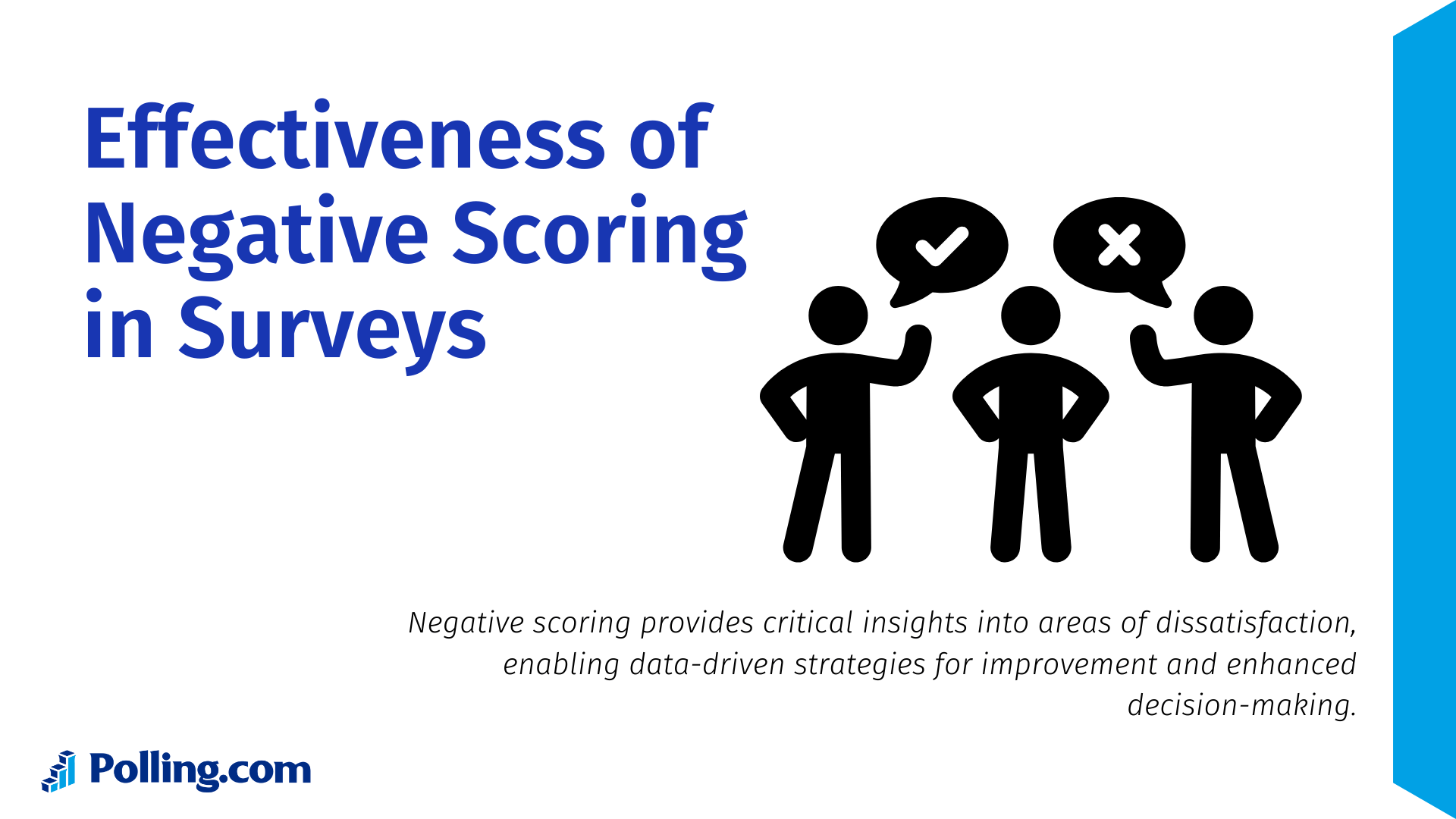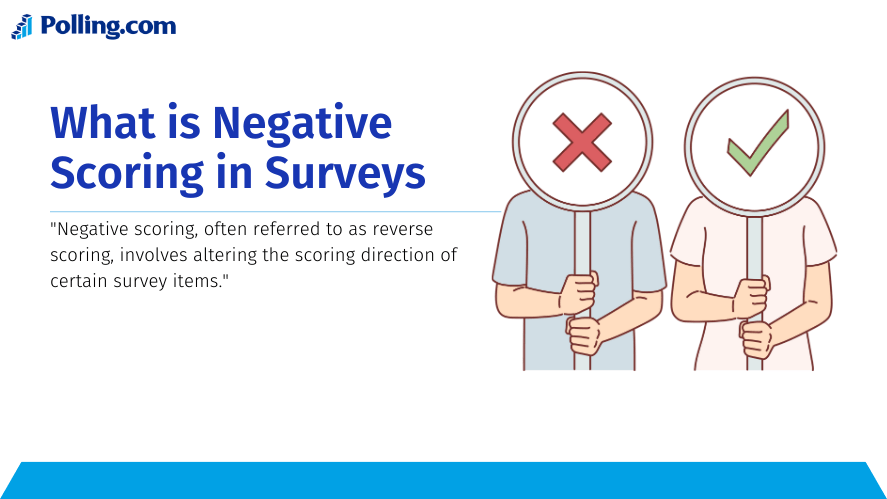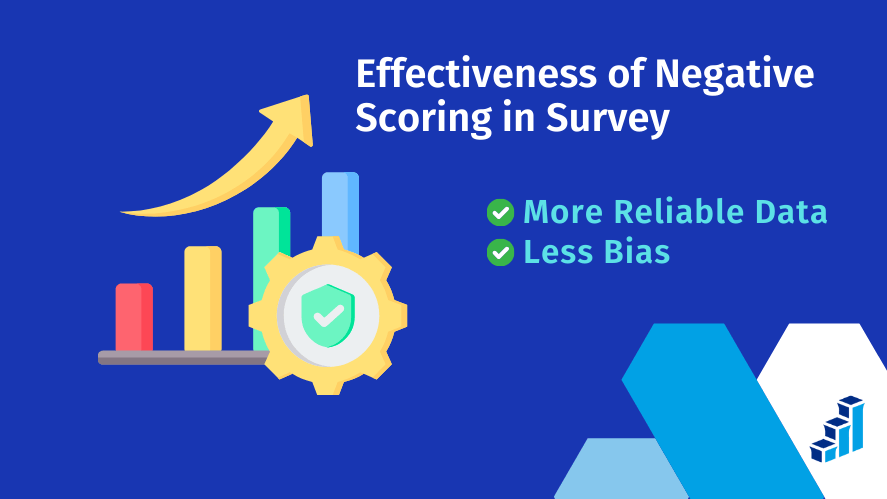
The Effectiveness of Negative Scoring in Survey Data Analysis
In survey research, accurately capturing respondent attitudes and behaviors is paramount. One technique employed to enhance data quality is negative scoring. But how effective is negative scoring in survey data analysis? This article delves into the concept, its applications, and its impact on research outcomes.
Understanding Negative Scoring in Surveys
What is Negative Scoring?

Negative scoring, often referred to as reverse scoring, involves altering the scoring direction of certain survey items. In a typical survey, higher scores might indicate stronger agreement or a more positive attitude. However, with negative scoring, the scale is inverted for selected questions to encourage thoughtful responses. For instance, a 5-point Likert scale may score “Strongly Agree” as 1 instead of 5.
This approach is particularly useful in avoiding response bias, such as when respondents consistently select high or low ratings without fully considering the questions.
Why is Negative Scoring Used in Surveys?
Negative scoring serves several purposes:
- Preventing Response Patterns: By varying scoring directions, it discourages mechanical responses, ensuring participants engage more with the survey.
- Improving Validity: It enhances the survey’s construct validity by reducing the likelihood of acquiescence bias (tendency to agree with everything).
- Enhancing Data Analysis: The inclusion of negatively scored items offers a more nuanced understanding of respondent attitudes, contributing to robust data analysis techniques.
The Role of Negative Scoring in Data Analysis
Effectiveness of Negative Scoring in Survey
Negative scoring plays a vital role in interpreting survey data accurately. By offsetting response biases, it provides a clearer picture of true respondent sentiments. Researchers have noted that surveys employing this technique tend to yield more reliable insights compared to those with uniformly scored items.
Effectiveness of Negative Scoring in Research Survey Best Practice
Implementing negative scoring requires careful planning to avoid confusing respondents. Best practices include:
- Clearly explaining the purpose of reverse-coded items in survey instructions.
- Balancing negatively and positively scored items to maintain survey coherence.
- Pre-testing the survey to identify potential issues with comprehension or consistency.
Survey Research Methods and Negative Scoring
Types of Survey Methods in Research
Surveys can be conducted using various methodologies, including:
- Online Surveys: These are cost-effective and scalable but can suffer from low response rates.
- Telephone Surveys: Effective for reaching specific demographics but may introduce interviewer bias.
- Face-to-Face Surveys: Offer high response quality but are time-consuming and expensive.
- Paper Surveys: Still relevant in certain contexts, particularly where digital access is limited.
Methods of Survey Research
Each method has unique strengths, and the choice depends on the research objectives and target audience. Negative scoring can be integrated into any of these approaches, enhancing the reliability of the collected data.
Examples of Negative Scoring in Surveys
Effectiveness of Negative Scoring in Survey Example

Consider a customer feedback survey measuring satisfaction with a service. While most items might follow a positive scoring direction (e.g., “The service was prompt”), some items could be negatively scored (e.g., “I often experienced delays”). Such questions force respondents to think critically, reducing the likelihood of biased answers.
Customer Feedback Surveys
In customer feedback surveys, negative scoring is particularly effective in identifying areas of dissatisfaction. For instance, it helps highlight specific pain points by counterbalancing overly positive responses.
Data Analysis Techniques for Negative Scoring
Techniques for Data Analysis
Analyzing data with negative scoring involves:
- Reverse-Coding Items: Transforming the scores of negatively scored questions to align with positively scored ones.
- Statistical Testing: Using techniques like factor analysis to ensure negatively scored items measure the intended constructs.
- Comparison Analysis: Evaluating how negative scoring affects response patterns compared to standard scoring.
Linking Negative Scoring to Customer Feedback
By applying negative scoring in customer feedback surveys, researchers can uncover latent dissatisfaction or nuanced perspectives. This information is invaluable for businesses looking to improve their services or products.
Advantages and Limitations of Negative Scoring
Advantages
- Improved Response Accuracy: By mitigating response bias, negative scoring enhances the precision of survey results.
- Better Construct Measurement: It ensures the survey accurately measures the intended constructs.
- Balanced Responses: Encourages respondents to critically assess their answers.
Limitations
- Potential Confusion: If not clearly explained, negative scoring can confuse respondents, leading to unreliable data.
- Increased Complexity: Incorporating and analyzing negatively scored items requires additional effort.
- Risk of Misinterpretation: Misaligned or poorly constructed items can distort survey results.
Conclusion and Recommendations
The effectiveness of negative scoring in survey data analysis lies in its ability to improve response accuracy and data reliability. By countering response bias and encouraging thoughtful engagement, it provides a more comprehensive understanding of respondent attitudes.
However, its success depends on careful implementation and adherence to best practices. Researchers should provide clear instructions, balance item scoring, and employ robust data analysis techniques. With these measures in place, negative scoring can significantly enhance the quality of survey research.
